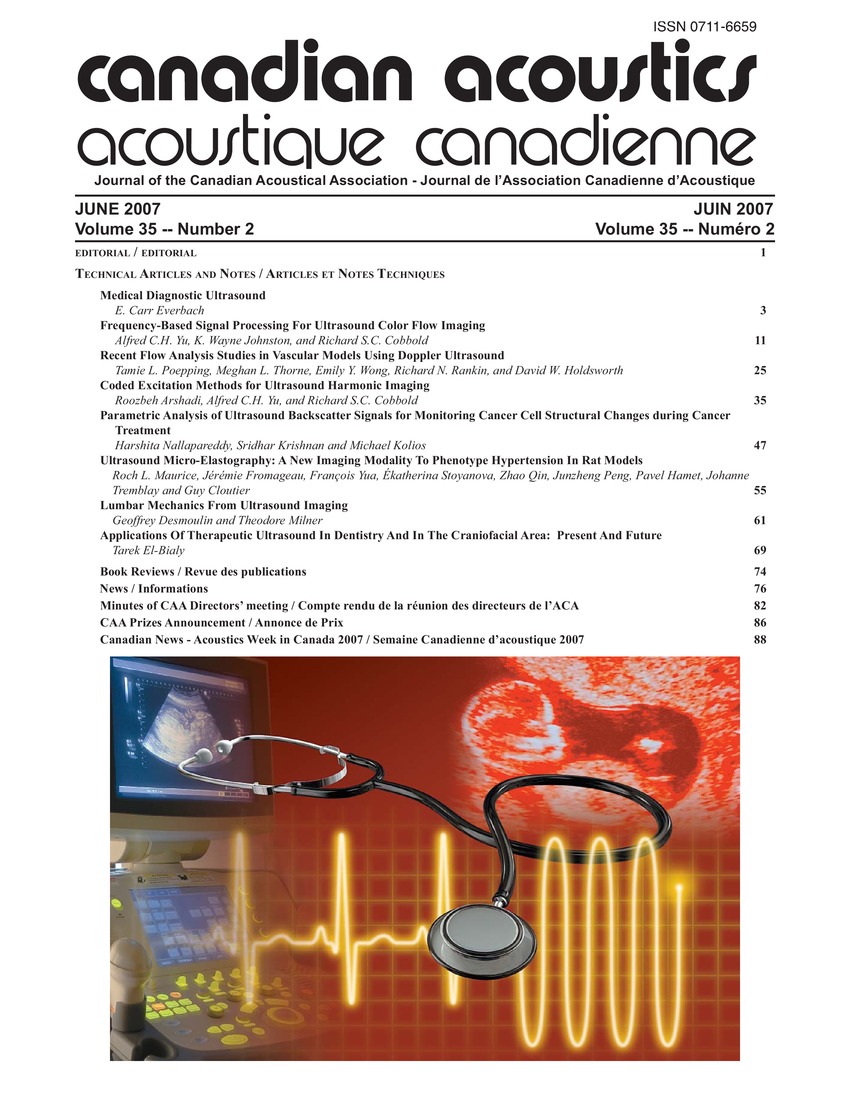Ultrasound micro-elastography: A new imaging modality to phenotype hypertension in rat models
Keywords:
Biological organs, Blood, Blood vessels, Elasticity, Rats, Stiffness, Ultrasonic imaging, Carotid artery, Elastogram, Strain cartography, Ultrasound probesAbstract
New ultrasound imaging methods are proposed to non-invasively characterize the mechanical properties of superficial arteries (MicroNIVE) and kidneys (MicroNIKE) in rodents. In MicroNIVE, the vessel wall is compressed/dilated by the blood flow pulsation, whereas time-sequences of high-resolution radio-frequency (RF) ultrasound data are externally acquired. The kinematics of the vascular tissue, assessed with the Lagrangian Speckle Model Estimator (LSME), provides a strain cartography also known as elastogram. Because the LSME assumes linear elasticity conditions, strain is inversely proportional to stiffness, which is an intermediate phenotype of the hypertension (HT) trait. Results are presented for the common carotid artery of spontaneously hypertensive rats (SHR, n = 5) and control normotensive Brown Norway (BN, n = 5) rats. At 15-weeksold, the SHR rats'carotid artery (4.46 ± 1.79% of strain) was found, on average, stiffer that of the BN's, which exhibited strains of 6.76 ± 1.48% (p < .059). On the other hand, in MicroNIKE, the kidney is externally compressed with the ultrasound probe while time-sequences of high-resolution RF data are acquired. For the purpose of investigating the feasibility of MicroNIKE, a fresh excised kidney from a Recombinant Inbred (RI) rat was investigated. The elastograms, computed with the LSME, clearly exhibited the medulla with distinct mechanical properties. It is concluded that MicroNIVE and MicroNIKE are promising new imaging tools to non-invasively and longitudinally study the impact of targeted genes on vascular tissue remodeling and nephroangiosclerosis in engineered rat models of HT.Additional Files
Published
How to Cite
Issue
Section
License
Author Licensing Addendum
This Licensing Addendum ("Addendum") is entered into between the undersigned Author(s) and Canadian Acoustics journal published by the Canadian Acoustical Association (hereinafter referred to as the "Publisher"). The Author(s) and the Publisher agree as follows:
-
Retained Rights: The Author(s) retain(s) the following rights:
- The right to reproduce, distribute, and publicly display the Work on the Author's personal website or the website of the Author's institution.
- The right to use the Work in the Author's teaching activities and presentations.
- The right to include the Work in a compilation for the Author's personal use, not for sale.
-
Grant of License: The Author(s) grant(s) to the Publisher a worldwide exclusive license to publish, reproduce, distribute, and display the Work in Canadian Acoustics and any other formats and media deemed appropriate by the Publisher.
-
Attribution: The Publisher agrees to include proper attribution to the Author(s) in all publications and reproductions of the Work.
-
No Conflict: This Addendum is intended to be in harmony with, and not in conflict with, the terms and conditions of the original agreement entered into between the Author(s) and the Publisher.
-
Copyright Clause: Copyright on articles is held by the Author(s). The corresponding Author has the right to grant on behalf of all Authors and does grant on behalf of all Authors, a worldwide exclusive license to the Publisher and its licensees in perpetuity, in all forms, formats, and media (whether known now or created in the future), including but not limited to the rights to publish, reproduce, distribute, display, store, translate, create adaptations, reprints, include within collections, and create summaries, extracts, and/or abstracts of the Contribution.


